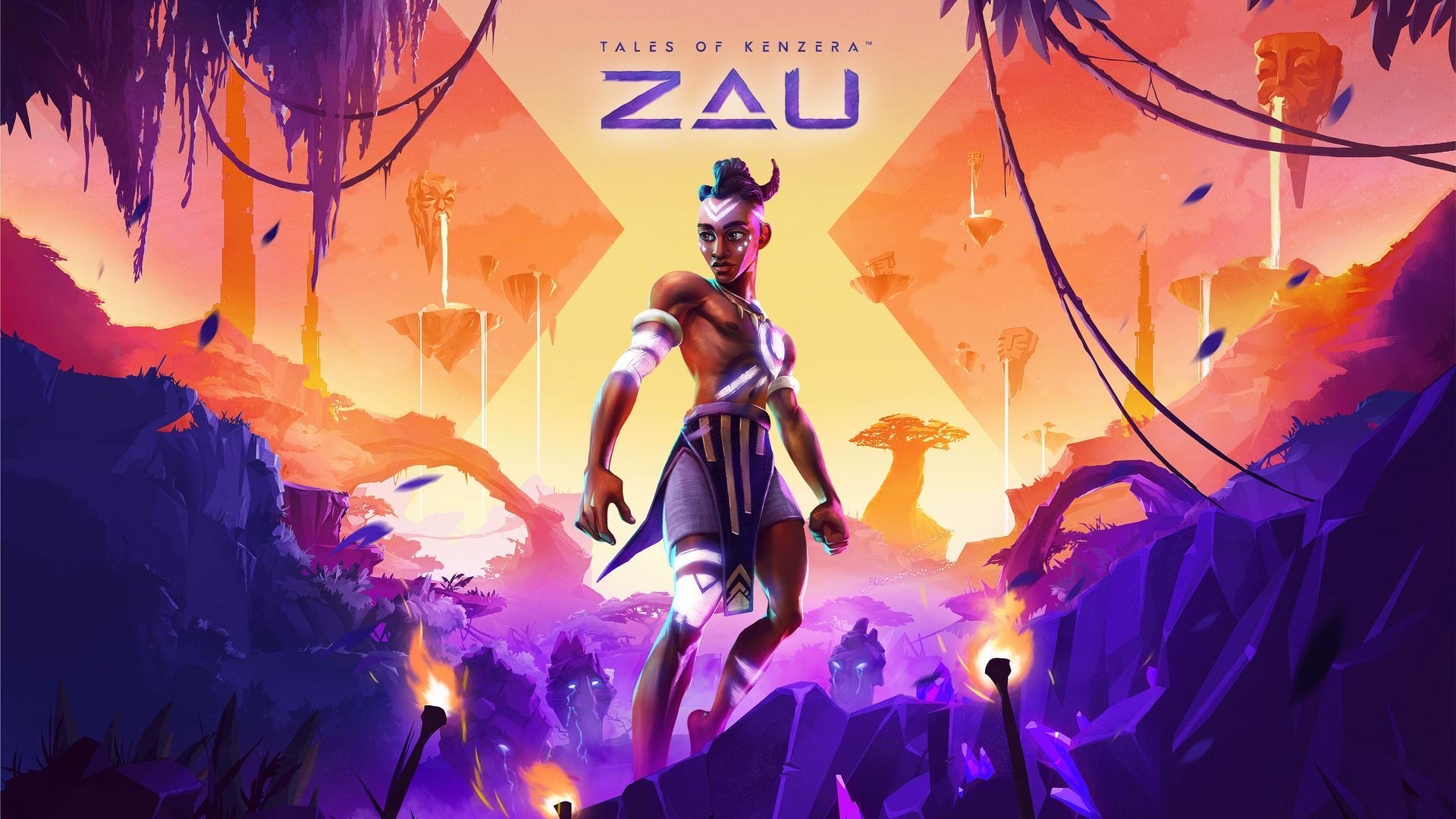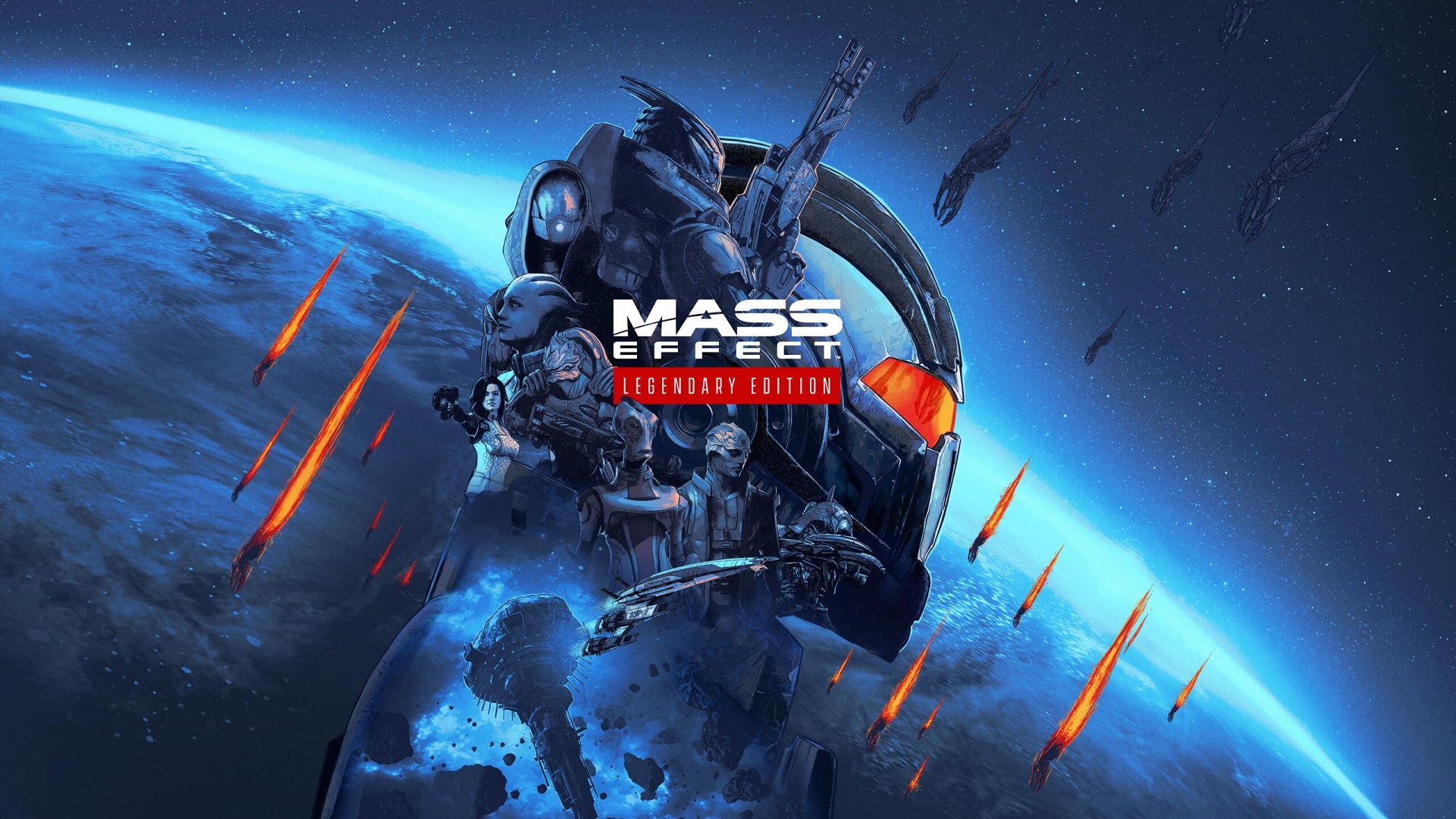Tales of Kenzera: ZAU Review (PS5) – A Touching Tale
It’s been a couple of weeks since I previewed the beginning hours of Tales of Kenzera: ZAU and I was left optimistic for what the future of the game could hold. Traversal was immediately engaging, combat was difficult but showed a potential for flare and the visuals were striking. I also mentioned in the preview how personal of a story Tales of Kenzera: ZAU is to Creative Director and CEO of Surgent Studios, Abubakar Salim.
Wrapped in a Metroidvania is a story of the protagonist’s grief, something reflective of Salim’s own journey after losing his father. It’s a powerfully relatable moment in anyone’s life that’s often a dark place, however, Tales of Kenzera is anything but. The land of Kenzera is brimming with bright colours, ornate structures and dense vegetation – bringing so much life to the journey to defy the afterlife. So how do these contrasting elements come together? Let’s get into it.
Life’s Cycle
The story follows a grieving boy not yet ready to say goodbye to their father. When exploring his father’s study, the boy finds a Bantu tale written by his father and reads it – swiftly transporting you into Kenzera. You play as Zau, the story’s protagonist and a recently anointed shaman who has lost his father much like the reader has. Zau wants to defy the God of Death, Kalunga, and take back his Baba’s soul to bring him back to the land of the living.
Kalunga reluctantly joins Zau on this journey, despite advising him to let the course of life happen and explore Kenzera to perform his shamanic duties. The African roots of Tales of Kenzera: Zau provides a refreshing perspective on what is a globally ubiquitous moment in a person’s life. The game goes through stages of Zau’s grief as he wrestles with the importance of his new role as a shaman. He’s naive, sometimes misguided, but overall determined to do what’s right.
It’s a tender story of a mission, that you know in your heart is futile, even if you’re rooting for Zau. However, it doesn’t stop you from hoping for a happy ending. Zau will meet people along the journey who represent certain aspects of grief and the more spiritual aspect of the game shines through what is otherwise a familiar story. The cast’s voice acting is powerful, especially Abubakar Salim’s performance as Zau. You feel everything he says, whether it’s his more naive comedic timing or warm heartfelt moments, it all bolsters the narrative.
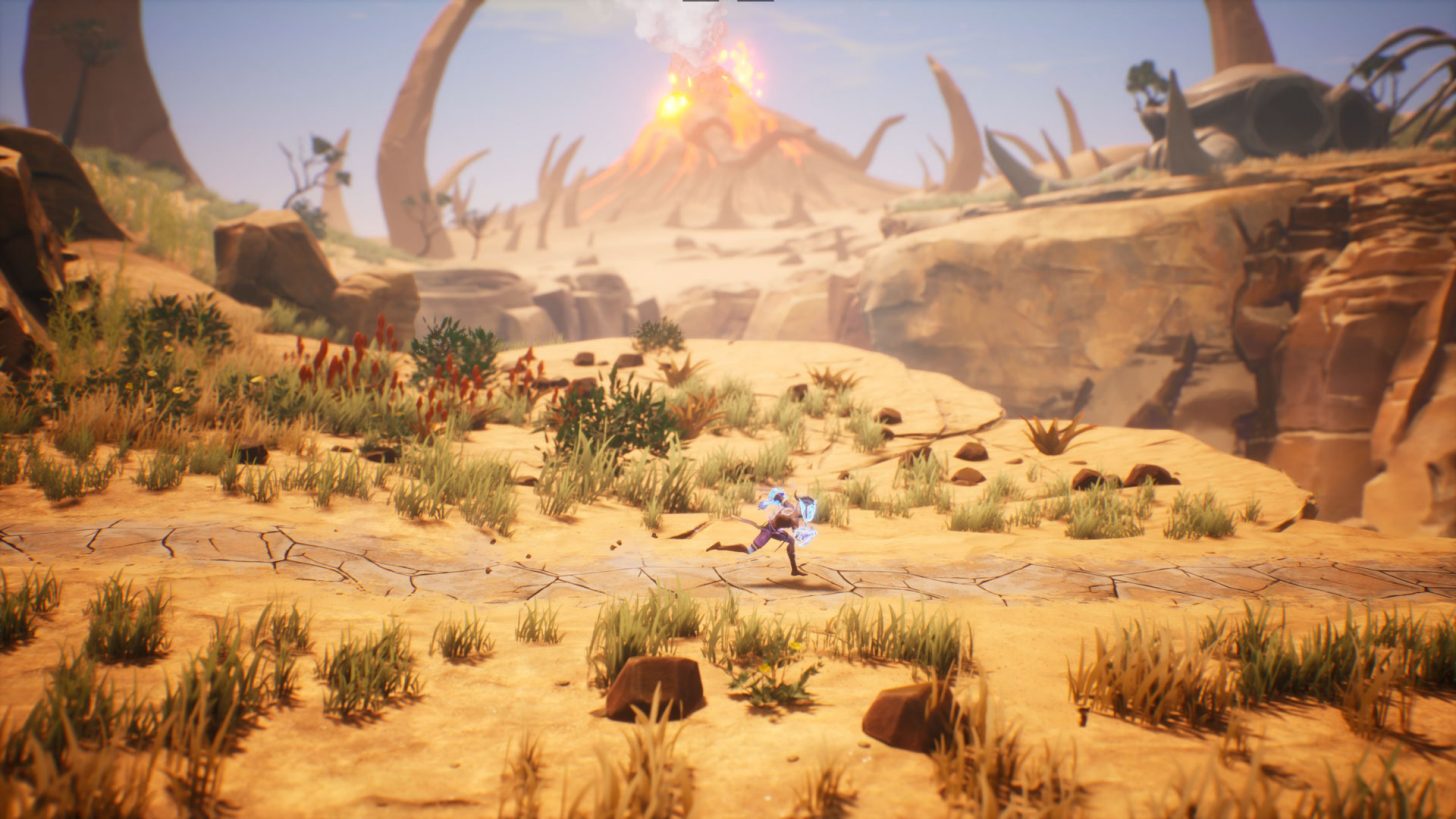
To The Sun And Moon
The gameplay was an element that had the biggest hill to climb for me coming away from the preview. It was initially engaging, but there were some real skill check moments early on during some of the combat encounters. As I mentioned in the preview, you start off straight away with a double jump and a dash, giving you an immediately engaging feel when traversing. Kenzera’s map is vast and full of death-dealing environments which is the game’s blessing and curse.
I love the winding design that utilises all your abilities to traverse across pits, traps and enemies. You feel nimble when it works, but there were too many moments that felt unfair that I grew frustrated when just trying to find the game’s collectables. As you progress through the game, you of course unlock new abilities for your traversal and combat.
Part of the Metroidvania fun is to unlock something new that’ll aid you in getting to areas previously inaccessible. However, I never felt much of a need to backtrack across the map as I would, more often than not, 100% an area along the way, if not straight after learning the ability in that area.
I’m partly grateful for that, as the actual accessibility of going across the map isn’t great. Fast travel points are few and far between and most of the map’s areas to potentially source a collectable requires a fair amount of death-defying backtracking.
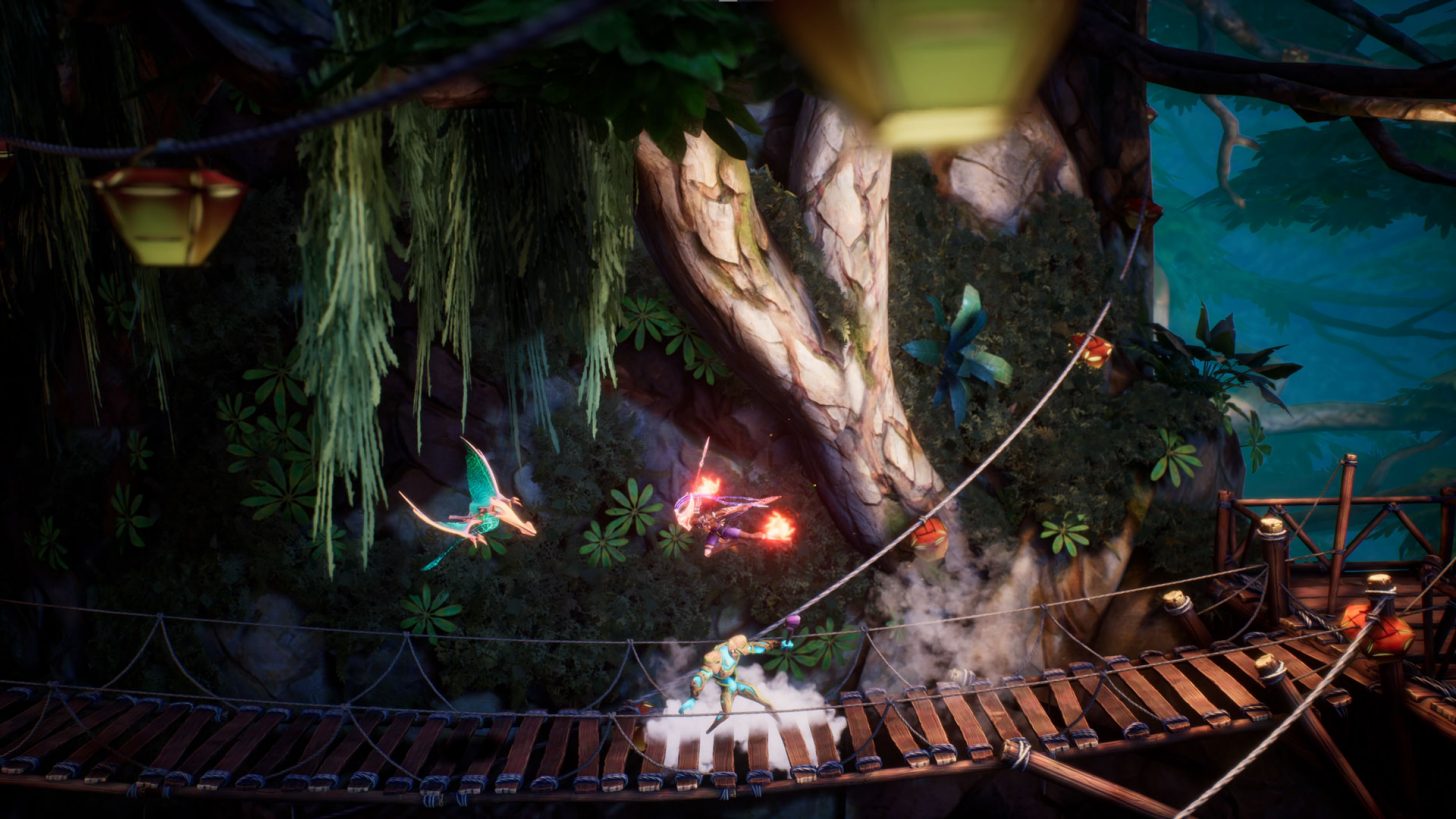
Big Brawls
In between all of the traversal puzzles you’ll be fighting against evil spirits in arena-like scenarios similar to say a Smash Bros. stage. These differ in the type of enemies and how many waves spawn per encounter, though from start to finish every fight felt about the same. Zau harnesses the powers of the Sun and Moon mask which you as the player can switch between at the click of a button.
The Moon mask gifts the ability to fire from gauntlets, freeze opponents and deal a powerful melee to push them back. The Sun mask has a focus on melee, using combos to juggle the enemies in the air and do fire damage to whittle down their HP.
Both masks have an overdrive attack that are anime levels of cool, with the moon ability acting as almost a Kamehameha and the sun ability being a firey tornado – both of which cause massive amounts of damage.
Encounters give you some XP to unlock more skills but I, for the most part, didn’t use them to the best of my ability. Maybe I made the playthrough harder on myself for not learning all the new moves you can unlock but the combat didn’t necessitate a need to learn. Moreover, I found myself getting stun-locked or at an unfair disadvantage due to the nature of the enemies.
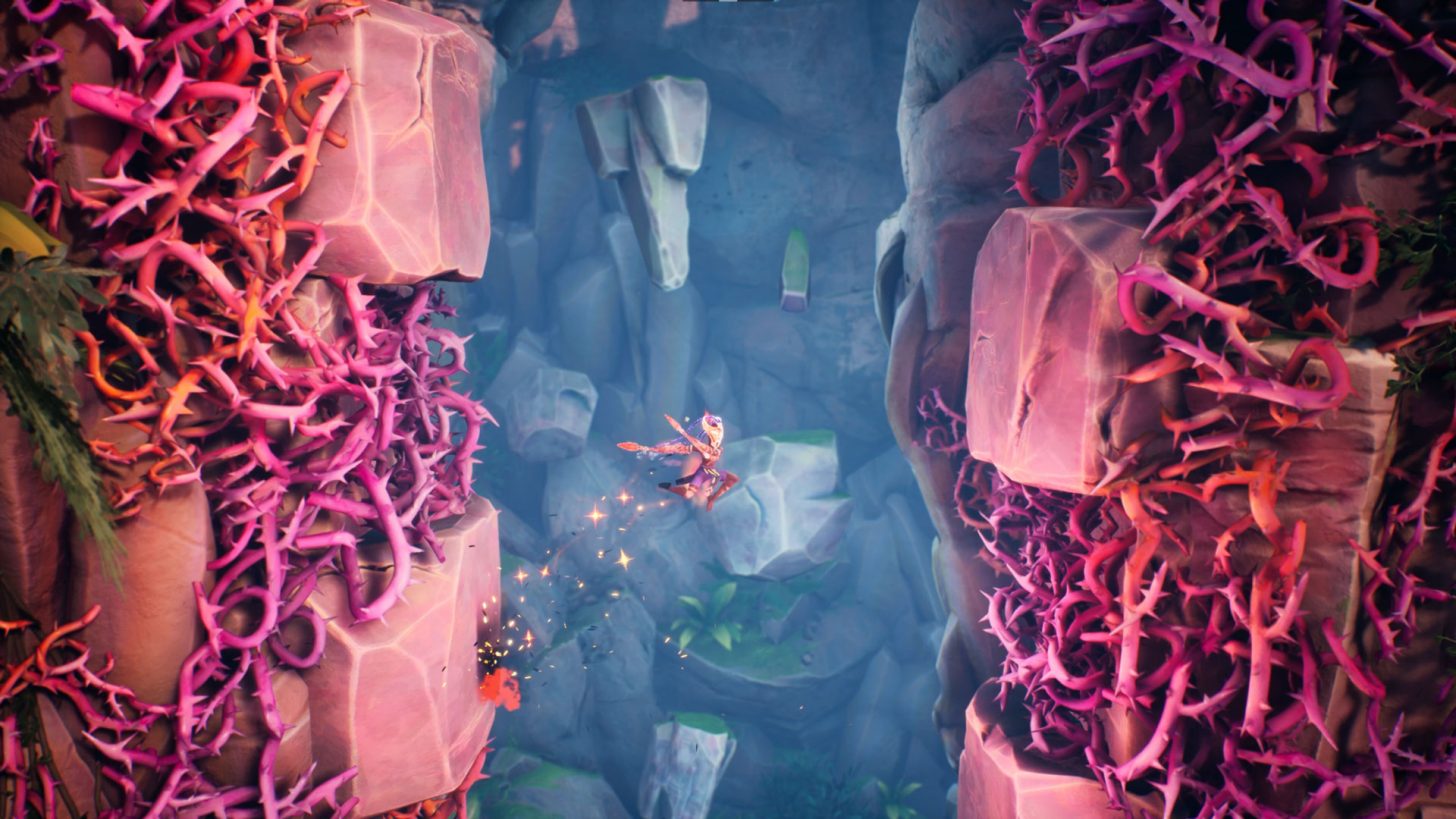
Under The Stars
With the Sun and Moon mask doing their own elemental damage, your enemies may have a corresponding colour to a mask, making them weak to that type of damage. You might come across a white bar which also acts as a shield, just without a type. My style of taking on these combat encounters was to use the fantastic traversal mechanics to be acrobatic and the game kind of needs you to be as enemies hit hard.
Even with HP upgrades dotted around the map, you’re still done for in a matter of a few hits. To compensate for that, you can heal almost at will, as long as you have enough Spirit. Your Spirit is a metre that you obtain through outputting damage, so there’s a high-risk, high-reward element that can be quite exhilarating. Your capacity to heal or use your overdrive ability is merely down to how aggressively you can play.
This would all feel quite harmonious but if you divert your focus for too long on an enemy who has had their shield beaten out of them, they’ll regain it pretty quickly. This forced me to switch up tactics, be more focused on an enemy until they were defeated, but with how the game facilitates my original strategy, I often felt at odds.
Despite that, there are trinkets you can equip that ease up certain areas you may need a hand in. You’ll find them across the map and they vary from giving you more HP every time you heal, resistance to certain damage or more spirit gained. Outside of the healing one I didn’t quite feel the difference, but they’re a neat enough addition.
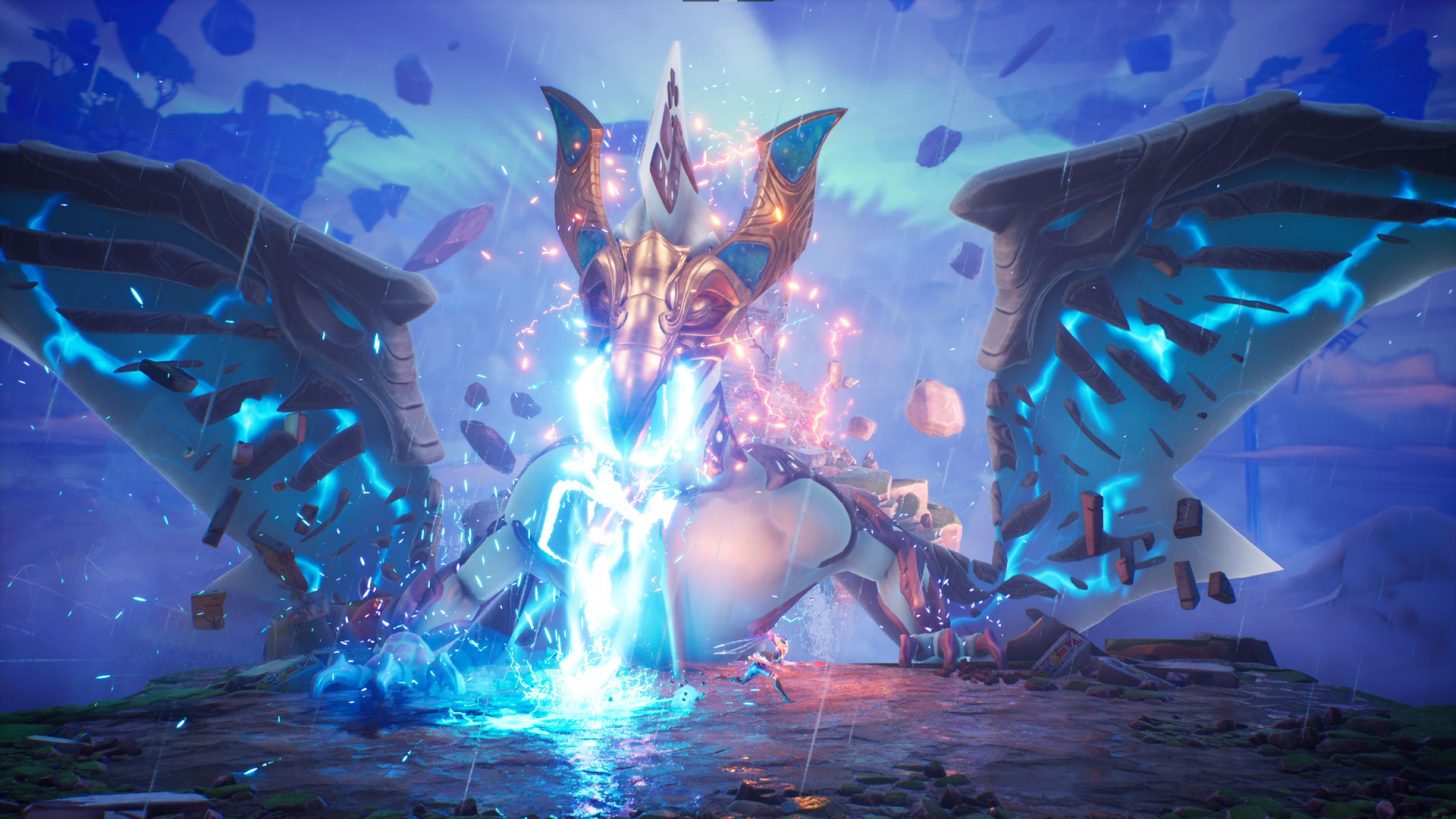
Accepting Fate
I mentioned earlier about the African roots that permeate throughout the narrative and world but it also applies to the opulent art style. Tales of Kenzera: ZAU has an astonishing use of colour that just pops from the natural colours of the mythical and varied lands of Kenzera. It’s all wonderfully atmospheric and only falters with the lack of enemy variety.
The great visuals are accompanied by a fantastic soundtrack, as the music fuses Western orchestration with traditional African instruments. It gives an almost triumphant cinematic soundtrack whilst remaining true to the setting of the game and it’s nothing short of amazing. There are some quieter moments that also use an 808 style of drumming that feels like it lends itself to feeling contemporary and something the protagonist would listen to. It feels very Into/Across The Spider-Verse.
There’s a lot to love about Tales of Kenzera: Zau, overall. I love the setting, the story, the soundtrack and the sentiment the game displays. However, as I got further into the game, I wasn’t quite gelling with how it played. The traversal in the game isn’t quite snappy enough for what it asks of you and the combat is frustrating when it doesn’t feel like it works as it should. I wish there was more Metroidvania elements injected into the game, but at 10-12 hours for 100% completion, there isn’t much room for it to expand in the ways I’d hope.
Tales of Kenzera: ZAU has its heart, setting and story all in the right place. However, the gameplay doesn’t quite facilitate the lofty ambition that it generally goes for. The gameplay is frenetic but not as tight as the game wants you to be and the combat has an unconventional approach to difficulty. However, I had fun in the world and if there are more stories in Kenzera, consider me already there.
Tales of Kenzera: ZAU is available 23rd April 2024 on PlayStation 5 (review platform), Xbox Series X|S, Nintendo Switch and PC via Steam.
Developer: Surgent Studios
Publisher: Electronic Arts
Disclaimer: In order to complete this preview, we were provided with a promotional copy of the game. For our full review policy, please go here.
If you enjoyed this article or any more of our content, please consider our Patreon.
Make sure to follow Finger Guns on our social channels –Twitter, Facebook, Twitch, Spotify or Apple Podcasts – to keep up to date on our news, reviews and features.
